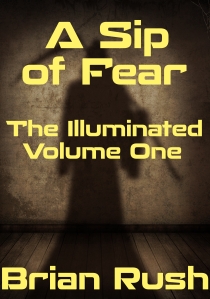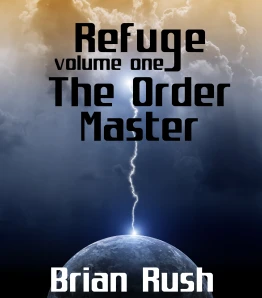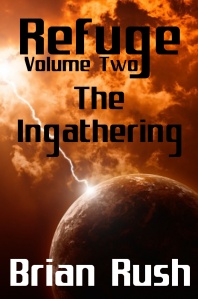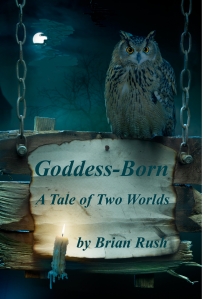
This post was sparked by a heated discussion on social media regarding the necessity of professional services for independent writers (editing, formatting, and cover design). I do not believe in that necessity — a statement that requires, however, a huge caveat. I do believe in the necessity of professional quality in these things, particularly editing. But it isn’t (absolutely) necessary to pay for them in order to have that quality.
Nor is it altogether a good idea, at least when a writer is starting out his or her career, for two reasons. To begin with, the first X number of books published by any writer (the value of X varies but is almost never zero) will not sell well no matter how perfectly they are edited and packaged. The writer is unknown. He must connect with his potential audience. Also, he must develop his abilities as a writer and there is only one way to do that: write. Your first novel, almost surely, won’t sell well because it won’t deserve to. It won’t be a good enough story and you won’t be good enough at storytelling to make it stand out from the crowd of other self-published books. You can expect to sell a few copies, but not very many. For that reason, professional services to make it as good as it can be amount to very expensive lipstick on a pig. It is unlikely in the extreme that the book will sell enough to cover the cost.
The other reason is even more important. These three skills — cover design, formatting, and especially editing — are ones that you really should have in your toolbox. As with writing, there’s no way to learn them other than by doing them, and if you’re always paying for someone else to do them you won’t learn them. The practical reality is that you can do almost all of them yourself if you develop the skills to do so. There is one extremely important exception and it’s a part of editing. But even with editing, you can do two-thirds of the tasks (which constitute nine-tenths of the work) yourself, and get help from someone else (or, better, at least two someones else) with that all-important third task.
If you don’t want to spend a lot of money on these services, or just plain don’t have it to spend, then there are three rules to doing without the pros.
1) Learn the skills.
2) Do it.
3) Get good beta readers.
In other words, quality requires either money or time, and if you don’t have the money you must invest the time. Far too many indie writers don’t. So let’s deal with those three things that you need to be able to do (besides writing) to make your book the best it can be. I’ll start in this post with editing, which is far and away the most important of the three.
Editing involves not one task but three, and only two of those can you do yourself without help. This is why we’re often told that “you can’t edit your own work.” There’s truth in that. You can’t do all of your own editing. But you can do two-thirds of it.
The three tasks of editing are proofreading, copy editing (also called style editing), and content editing. The last of those is the one you’re going to need someone else for. Luckily, it’s also the most enjoyable of the three and the least tedious, so getting help isn’t that hard, where if you want someone to proofread your work you’re almost certainly going to have to pay for it.
Proofreading. This task involves going through the book to find and correct misspellings, grammatical errors, punctuation errors, and so on. Yes, your word processing software comes with spelling and grammar checkers, and these can help, but they are not a substitute for proofreading by a human being. They just make the job a little easier. Spell checkers won’t correct a word that’s spelled correctly but is the wrong word. For example, if you were to write, “The burden was more than he could bare,” neither the spell checker nor the grammar checker would say boo. “Bare” is a real word, it’s correctly spelled, and it’s a verb where a verb is called for, but it’s still wrong. (Actually I just experimented and found that my Word grammar checker does catch this one, which is pretty amazing. But don’t count on that. I’ve seen it do some very stupid things.)
You must know how to spell, and you must know correct English grammar. (Just to make things more complicated, you must know the correct spellings for the type of English you are writing — American English has many words that are spelled differently than the same word in the UK, Australia, or Canada, thanks to the fact that English didn’t even have standard spellings until right around the time America became independent, and then the country developed its own standard spellings in parallel to the ones set down in England.) (I really pity people learning this tongue as a foreign language.) You must also know the correct spellings of any made-up words or names that you use in your writing — you’re an absolute authority on how they are spelled in that case, but you must be consistent. You must go through your book repeatedly. One pass is not enough. (You can do proofreading at the same time as copy editing and plain old reading to revise, though, so it’s not quite as awful as it sounds.) Make no mistake: this is work. It’s not as much fun as writing that first draft, but it’s a labor that must be done. Spelling and grammatical errors in a book are distracting; they pull the reader out of immersion in the story and they annoy. Two or three of them in a full-length novel don’t meet my standards, but if you’re not as much a perfectionist as that, they’re probably allowable; most trade-published books have a few errors. But two or three on a page is absolutely not acceptable. And you will not catch them all the first time you proofread the book. I don’t care how good you are.
How many times must you go through it looking for errors? Until you don’t find any, and then once more. When you have gone through the book twice and found no errors, it may not be error free, but it’s surely close enough that the reader will forgive you for the few that remain, and professional publishers won’t do any better.
Copy editing. This task is somewhat similar to proofreading, but instead of looking for spelling and grammar errors, you’re looking for clumsy style or language that could be shortened, tightened, made stronger. I look for sentences that are too long (my great stylistic failing), and also for repeated words. Except for articles, conjunctions, and prepositions, I don’t like to use the same word twice in the same half a page. I like to read through it aloud, and if I hear a word used too often I change it so that no longer happens.
Go through with a merciless pair of scissors. Cut out anything that doesn’t need to be there to say what you want to say. Be particularly ruthless with adverbs. There’s a somewhat exaggerated rule in writing style that you should never use adverbs; that’s not true, but it is true that novice writers use far too many of them. Many times a sentence can be strengthened if you just cut out superfluous words. Occasionally, the opposite is true and something needs to be added.
The rules of style aren’t as hard and fast as those of spelling and grammar, but they do exist. I suggest picking up a copy of a good literary style guide, such as the classic Strunk & White’s The Elements of Style and reading through it, focusing on the type of writing you want to do. These are rules that can be bent. But before you can bend them appropriately, you need to understand them. Also, the more reading you do of the same type of book you are writing, the more you will have a feel for what makes good writing style.
How many times should you go through and revise a book for style? The same rule applies as for proofreading, with one extra proviso. Do it until you don’t find anything that needs changing. Then put the book aside for a couple of weeks minimum. Then do it again. When you have gone through it twice (with some time off in between) and not found anything to change, then it’s ready.
Some people argue that a writer shouldn’t do his own copy editing. I don’t agree, unless you are unfamiliar with what makes for good writing style, and in that case you should still do your own because that’s how you’re going to learn. (Although it won’t hurt to have someone give you a second opinion.) It’s the third task, content editing, that requires someone else.
Content editing. This last task that’s bound up in the overall concept of “editing” is looking at the flow of the story, the characterization, the pacing. It involves looking for plot holes, inconsistencies, places where developments aren’t clear, actions on the part of a character that don’t seem right, events that seem out of order.
You can’t do your own content editing — and yet you have to. Say rather, you can’t do the content editing by yourself. Sure, go through it and look for things like this, and you’ll find some of them and fix them and also see ways to make the story better and more compelling. But guaranteed you’ll miss things. You’re too close to the story. You know exactly what you’re trying to say, and so you’re not the best judge of whether you’ve succeeded in saying it.
This is the biggest service a professional editor will do for you. It’s the only thing that a pro will do for you that you can’t do just as well for yourself if you work at it. But while someone else looking at your work is mandatory, that someone does not have to be a professional editor. An experienced writer can be just as good. The skill sets are very close to identical when it comes to content editing. A common approach is to do a trade, paying for someone else helping you with content editing by doing the same for her. Content editing, especially if the proofing and style editing have been largely done already, is actually fun. It doesn’t take a lot of persuasion to get people to do it for you. It gives them a free book to read, after all! And they get to tell you where you’ve screwed the pooch, and get thanked for it!
Whatever arrangement you make with your content editor(s) (I would recommend having at least two), pay attention to their recommendations. Even if you decide in the end that a suggestion isn’t appropriate, you will have gained much by considering it, especially if it had never occurred to you before.
As with the other editing tasks, content editing should be done until there’s nothing more to change — and then once more after waiting at least couple of weeks.
Work at it!
Does this sound like a lot of work? If so, then I’ve communicated the main thing I want to. Quality doesn’t come without work, either your own or that of someone else you hire to do it for you. Right now, the indie book scene — a large portion of it, anyway — is a sad travesty. There are far too many books out there that haven’t been edited properly, which gives people who want your money an excuse to say that you have to pay them or your book will suck. They’re wrong about that. But it will suck if you don’t put the necessary work into it, whether that work comes from your brain or from your wallet.
Image credit: justdd / 123RF Stock Photo
 I observed two events today in the world of publishing and book distribution that alarm and offend me.
I observed two events today in the world of publishing and book distribution that alarm and offend me.












